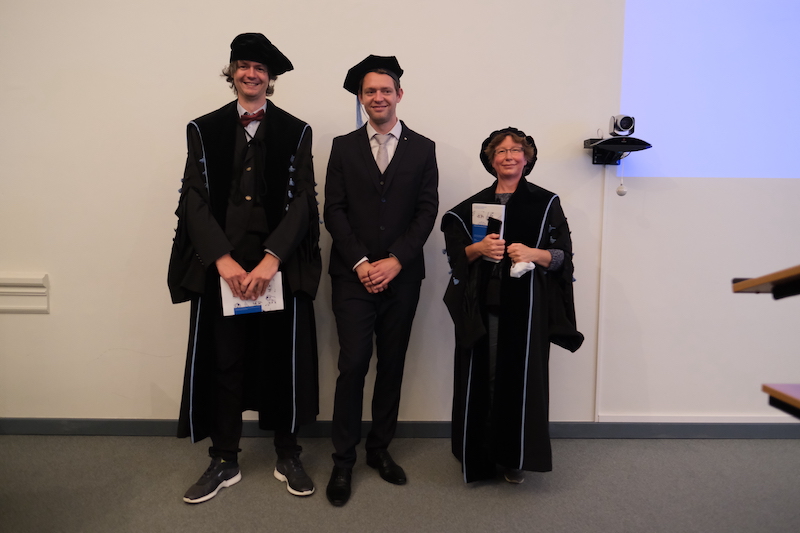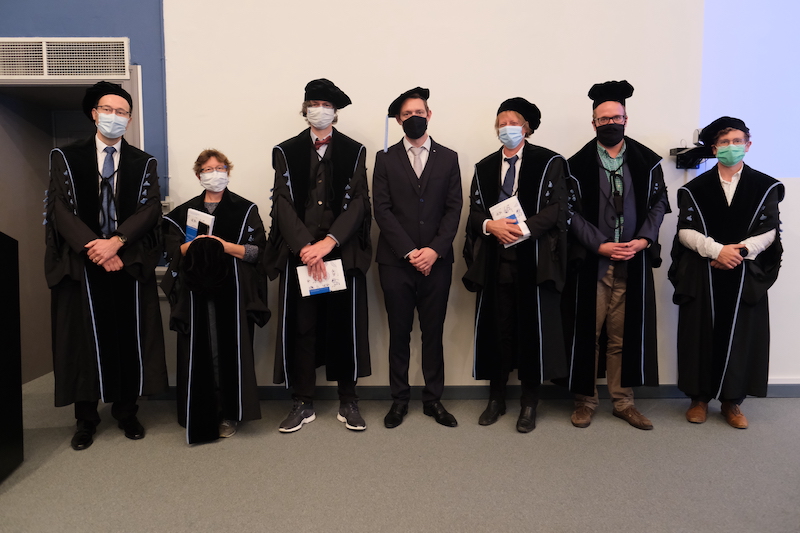PhD defence of Gabriel Urbain
In the future, can robots move as smoothly as animals? That is what Gabriel Urbain is investigating in his PhD which he defended today!



A better understanding of locomotion processes has many benefits in our society. On the one hand, it can help design efficient robots with legs, which can propel themselves on uneven terrains or in the presence of obstacles.
On the other hand, it can also improve the knowledge in biological sciences and, in particular, neurosciences. In turn, this could have future applications in medecine, sport, prosthesis design, …
“The main difficulty is that compliant and soft robots are less suited to control with traditional computer architectures, which generally focus on centralized control and exactness”, explains Gabriel Urbain.
“New models, data-driven or biologically inspired, offer a real opportunity in this direction but they raise some fundamental questions regarding the dynamic properties and the strict interpretation of their control processes”, Gabriel continues.
In his dissertation, Gabriel Urbain attempts to answer three of these research questions: How does the mechanical compliance (flexibility of the mechanical parts) correlate with the locomotion efficiency and complexity of the controller? How to transfer a controller from simulation to real robots? How can a model inspired by the Cerebellum help stabilize reflex-based control?
From assumptions in biology, machine learning, and the theory of dynamical systems, these questions were evaluated in simulation and on real robots, such as the quadruped HyQ.
Text editor: Jeroen Ongenae - Final editing: Ilse Vercruysse